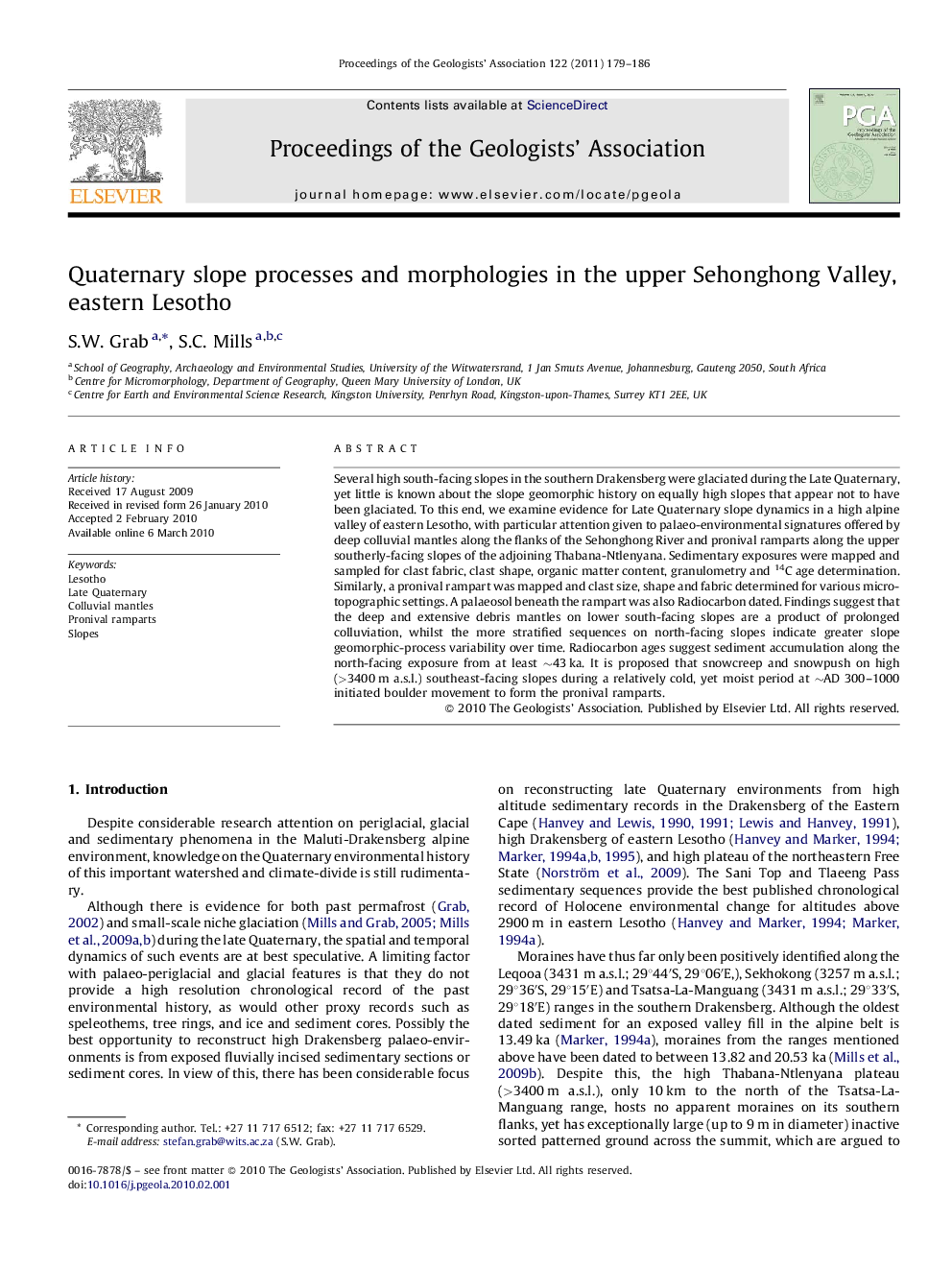| Article ID | Journal | Published Year | Pages | File Type |
|---|---|---|---|---|
| 4734800 | Proceedings of the Geologists' Association | 2011 | 8 Pages |
Several high south-facing slopes in the southern Drakensberg were glaciated during the Late Quaternary, yet little is known about the slope geomorphic history on equally high slopes that appear not to have been glaciated. To this end, we examine evidence for Late Quaternary slope dynamics in a high alpine valley of eastern Lesotho, with particular attention given to palaeo-environmental signatures offered by deep colluvial mantles along the flanks of the Sehonghong River and pronival ramparts along the upper southerly-facing slopes of the adjoining Thabana-Ntlenyana. Sedimentary exposures were mapped and sampled for clast fabric, clast shape, organic matter content, granulometry and 14C age determination. Similarly, a pronival rampart was mapped and clast size, shape and fabric determined for various micro-topographic settings. A palaeosol beneath the rampart was also Radiocarbon dated. Findings suggest that the deep and extensive debris mantles on lower south-facing slopes are a product of prolonged colluviation, whilst the more stratified sequences on north-facing slopes indicate greater slope geomorphic-process variability over time. Radiocarbon ages suggest sediment accumulation along the north-facing exposure from at least ∼43 ka. It is proposed that snowcreep and snowpush on high (>3400 m a.s.l.) southeast-facing slopes during a relatively cold, yet moist period at ∼AD 300–1000 initiated boulder movement to form the pronival ramparts.
